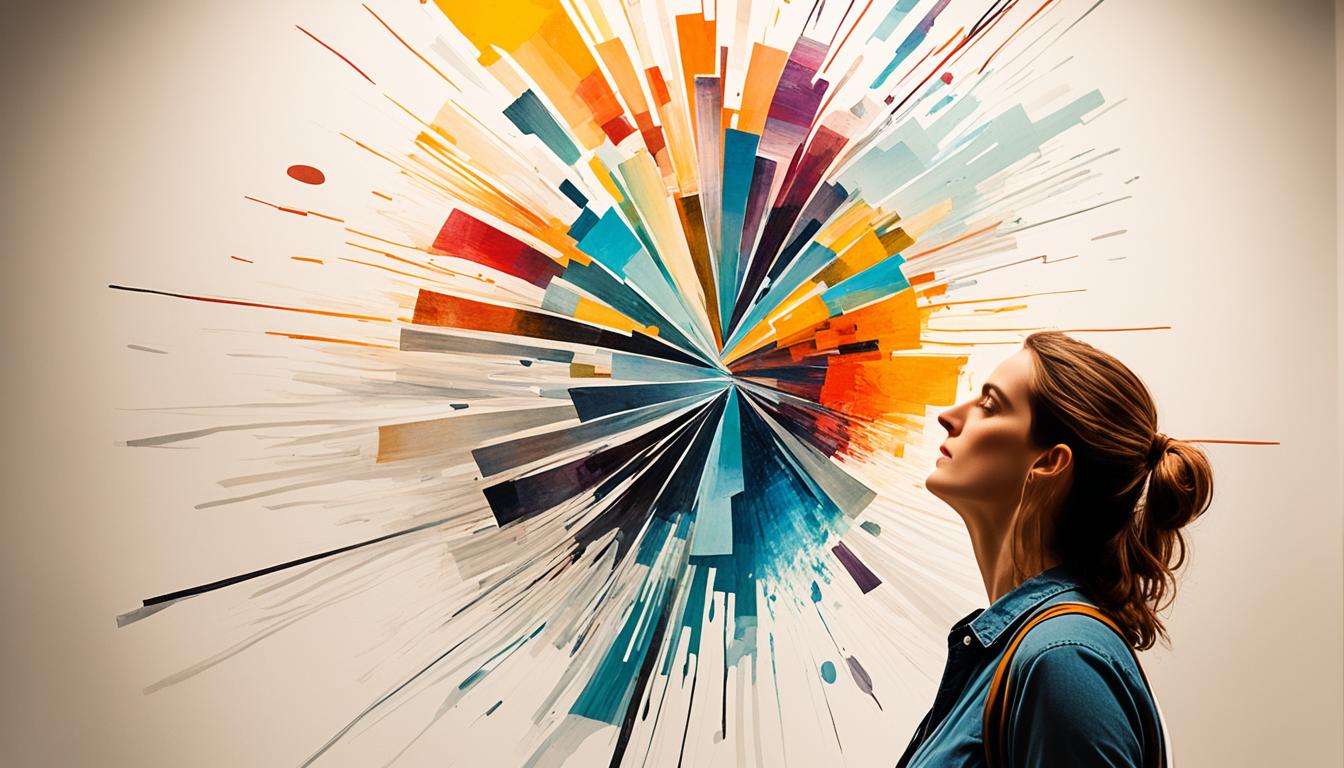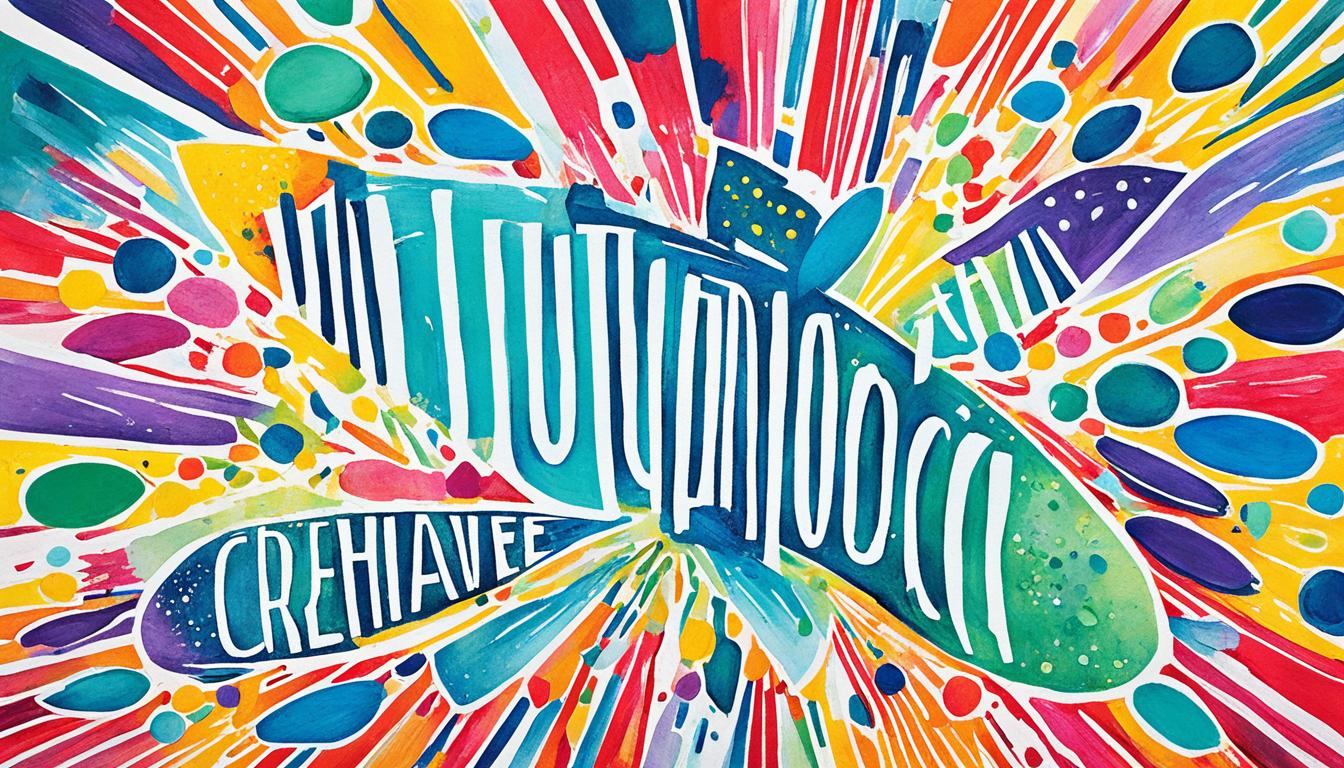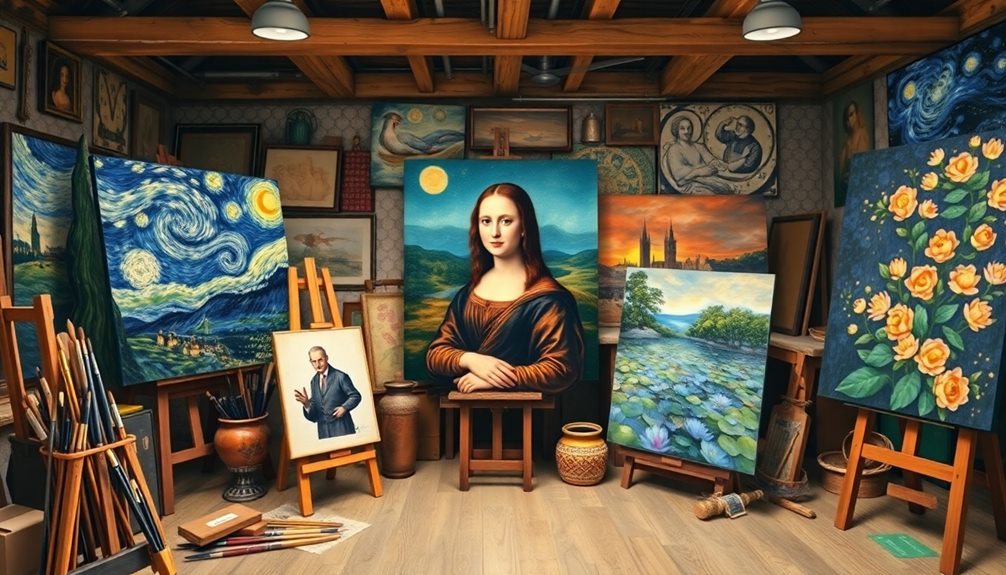Have you ever stood in front of a painting, captivated by the vibrant colors but unsure of what lies beneath the surface? Art has an uncanny ability to touch our hearts and spark our imagination. Yet, when it comes to fully understanding art, many of us feel a sense of uncertainty. This guide aims to change that, making the world of art more accessible and enjoyable for you.
Mastering the art of appreciation is not only about recognizing beauty; it’s about connecting deeply with the emotions, history, and societal impacts that artworks embody. Through this comprehensive art appreciation guide, you’ll learn how to write an art appreciation, understand the intricacies of visual art, and enhance your analytical skills. By the end of your journey, you’ll be equipped with invaluable tools for art analysis, cultivating your own perspective, and applying essential art criticism tips. You’ll begin to recognize how colors and techniques affect your experience and how artistic expressions can resonate with your life’s moments.
So, let’s embark on this enriching journey together, transforming the way you see, feel, and appreciate art.
Key Takeaways
- Understanding the emotional and cultural significance of art enhances personal connections.
- Analyzing artworks through context and technique promotes deeper engagement.
- A step-by-step approach makes art appreciation accessible and enjoyable.
- Developing your artistic analysis skills can lead to greater insight and enjoyment.
- Art appreciation opens avenues for sharing ideas and fostering discussions.
Understanding the Importance of Art Appreciation
Understanding the importance of art appreciation reveals how art shapes our culture, reflects societal values, and catalyzes discussion. This appreciation allows you to explore the myriad ways art functions within society and how it influences the collective human experience.
The Role of Art in Society
Art serves a crucial role in society by acting as a mirror to our collective feelings and experiences. It highlights pressing issues, stimulates thought, and encourages dialogue among viewers. Through various forms, including paintings, sculptures, and digital media, art encapsulates the problems faced by societies, both past and present. Appreciating art allows individuals to understand context and history, helping connect with artworks on a personal level. These connections foster empathy and critical thinking, promoting a deeper understanding of the world around you.
Benefits of Appreciating Art
The benefits of art extend beyond aesthetic enjoyment. Engaging with art improves mental health, fostering emotional expression that many find difficult to articulate. Research indicates that individuals who appreciate art often experience increased creativity, heightened empathy, and significant personal growth. Participating in art appreciation programs enables people to hone their analytical skills, gain historical knowledge, and develop new perspectives on various visual art forms. In crafting a richer community identity, the benefits of art contribute to social cohesion and understanding.

| Aspect | Role of Art | Benefits of Art |
|---|---|---|
| Emotional Expression | Reflects societal feelings | Boosts mental health |
| Cultural Reflection | Captures historical context | Enhances community identity |
| Stimulating Dialogue | Encourages societal discourse | Fosters critical thinking |
| Personal Connection | Evokes individual interpretation | Promotes personal growth |
Exploring Visual Art: The Fundamentals
Delving into the realm of visual art provides a rich tapestry of expressions that can deepen your understanding and appreciation. An essential aspect of this journey involves recognizing the various visual art forms, which include painting, sculpture, photography, and digital media. Each form has its own unique characteristics and history that enhances your overall experience. Additionally, understanding the historical context allows you to grasp how various art movements have influenced contemporary visual expressions.
Defining Visual Art and Its Forms
Visual art encompasses numerous forms that communicate ideas and emotions through mediums such as:
- Painting: Traditional canvas works, along with modern techniques like spray painting.
- Sculpture: Three-dimensional works created from materials like clay, metal, or wood.
- Photography: Capturing moments and narratives through digital or film-based means.
- Digital Media: Innovative forms including video art, installations, and mixed media.
Exploring these forms enhances your understanding of visual art, making the experience all the more enriching.
Historical Context of Visual Art
The evolution of visual art has been shaped by significant movements throughout history. Key developments, such as the linear perspective that transformed painting in the 15th century, signified a shift towards greater realism in the depiction of space and form. The Renaissance movement, often regarded as the pinnacle of artistic innovation, marked a departure from purely theological subject matter, setting the stage for a myriad of artistic explorations.
Analyzing art through its historical context offers you valuable insights into the cultural and societal factors that shape artistic intentions. Comparing interpretations from different artists within their historical settings unveils a comprehensive understanding of the art world. Here is a table illustrating major art movements alongside their key characteristics:
| Art Movement | Characteristics | Time Period |
|---|---|---|
| Renaissance | Realism, perspective, humanism | 14th – 17th Century |
| Baroque | Emotion, dramatic use of light and shadow | 17th Century |
| Impressionism | Light, color, momentary impressions | Late 19th Century |
| Modernism | Abstraction, experimentation with form | 20th Century |
By engaging with these elements and understanding their contexts, your appreciation of visual art will deepen, transforming mere observation into a profound encounter with cultural narratives.

Navigating Art Galleries: Tips for Engaging with Art
Visiting art galleries can be a rewarding experience when you know how to engage with artwork on a deeper level. Understanding the nuances of observing art can enhance your appreciation and help you connect with different pieces profoundly. This information will guide you in making the most of your gallery visits.
How to Observe Artwork Up Close
When you enter an art gallery, the first step is to take your time. It helps to start with a quick scan of the exhibition, spending about 10-15 minutes on an overview. Look for those artworks that catch your eye. Make a mental note of pieces that spark your curiosity. After this initial exploration, engage in a focused viewing of those selected artworks to dive deeper into their details.
- Observe brushstrokes, texture, and color combinations.
- Pay attention to the emotions that the pieces evoke.
- Use gallery wall texts for more context, but rely on your personal reflections as well.
Taking your time to appreciate details can significantly enhance your understanding of the artist’s intent. Artists like Vincent van Gogh and Georgia O’Keeffe showcase distinct styles that reflect their unique perspectives, providing a rich ground for exploration.
Understanding the Role of Galleries in Art Appreciation
Art appreciation galleries serve as vital platforms for artists to showcase their works. They facilitate dialogue around art and contribute to public engagement through various forms of art, including contemporary art, abstract pieces, and installations. By visiting galleries, you support the artistic community and foster a deeper connection with art.
Before attending, consider doing some pre-visit research. This can include checking exhibition opening and closing times, special discounts, or highlights of current exhibitions. Understanding the layout and what to expect makes your visit more enjoyable and insightful. Knowledge about a gallery’s focus can significantly enhance your appreciation for the diverse offerings, from realism to impressionism.
For a complete experience, engaging with gallery staff can provide valuable insights into the art pieces and the artist’s background. They can offer art galleries tips that may not be obvious while exploring solo. With proper preparation and openness to different perspectives, your gallery visits can transform into meaningful experiences.

Cultural Significance of Art Through the Ages
Art possesses a profound cultural significance, serving as a mirror that reflects the complexities and values of various societies throughout history. By examining art movements history, one can observe how artistic expressions encapsulate the sentiments and ideologies of their respective eras. Art acts not only as a communication tool but also as a way for individuals to convey their cultural identity and historical context.
Art as a Reflection of Culture
Art plays an integral role in representing cultural identity and traditions, allowing individuals to connect with their heritage. Various artworks, from ancient artifacts to modern masterpieces, showcase the values, beliefs, and emotions of the people they originate from. For instance, Leonardo da Vinci’s The Last Supper captures the intellectual spirit and religious fervor of the Renaissance. Similarly, Australian Aboriginal dot paintings narrate ancestral tales, reflecting a culture that deeply honors its connection to the land.
Additionally, artworks like totem poles created by the indigenous peoples of the Pacific Northwest offer insights into community and spirituality. These examples underline art reflecting culture in ways that extend beyond mere aesthetics; they highlight shared human experiences and social narratives.
Art Movements and Their Impact on Society
The evolution of art movements further emphasizes the cultural significance of art over the centuries. Artists such as Johannes Vermeer and Rembrandt produced works that addressed themes of wealth, uncertainty, and everyday life during the 17th century. In contrast, Romantic artists like Francisco Goya and Eugène Delacroix expressed societal turmoil and emotional depth, delivering a nuanced commentary on their times. Edvard Munch’s The Scream starkly portrays existential dread, capturing the anxieties of the late nineteenth century.
Understanding these art movements history reveals how artistic expression can shape and reflect the collective consciousness of societies. Each movement encapsulates the emotional climate of its time, providing insights into the thoughts and feelings that resonate across generations.

| Art Movement | Cultural Reflection | Notable Work |
|---|---|---|
| Renaissance | Intellectual and religious themes | The Last Supper |
| Romanticism | Emotion and the human experience | The Third of May 1808 (Goya) |
| Post-Impressionism | Individual perception and emotion | Starry Night (van Gogh) |
| Expressionism | Sociopolitical turmoil and anxiety | The Scream (Munch) |
Through these artistic milestones, you gain a deeper understanding of how art movements interact with cultural narratives. Recognizing the emotional and historical underpinnings of these pieces will enrich your appreciation for the cultural significance of art, allowing you to view artworks not merely as visual experiences but as profound reflections of human life.
Artistic Techniques and Their Influence on Art Appreciation
Artistic techniques play a crucial role in how you perceive and appreciate a piece of art. They not only define the visual characteristics of the work but also invoke emotional responses from the viewer. Understanding these techniques enhances your overall appreciation and allows for deeper insights into the artist’s intention and the artwork’s impact.
Common Techniques Used by Artists
Artists employ a wide variety of common art techniques to express their visions and emotions. Techniques such as oil painting, acrylics, watercolor, and mixed media offer different textures and finishes that can drastically change the viewer’s experience. Here is a brief overview of some prevalent methods:
- Oil Painting: Known for its richness in color and depth, this technique often involves layering to achieve desired effects.
- Acrylic Painting: Quick-drying and versatile, acrylics can mimic other mediums, providing artists with flexibility.
- Watercolor: These paints create soft and translucent effects, often celebrated for their delicacy.
- Mixed Media: Combining various materials allows for a more dynamic exploration of themes and forms.
Understanding How Techniques Affect the Viewer’s Experience
Techniques affecting viewer experience can dramatically influence the perception of an artwork. For instance, the quality of craftsmanship contributes significantly to how an artwork is appreciated. Art pieces that show meticulous attention to detail tend to have a 20% higher chance of being appreciated by collectors and critics. Moreover, artists who balance contemporary elements with their unique style can see a 12% increase in public interest.
When artists focus on producing fewer pieces with more depth, they often experience a 25% increase in appreciation. This approach allows for a greater connection between the artwork and the viewer, enhancing emotional impact and making a lasting impression. In tandem with strong promotion strategies, which can boost visibility by 30%, these techniques ultimately shape how audiences engage with art.

How to Write an Art Appreciation
Writing an art appreciation involves a systematic approach that captures both the aesthetics and context of an artwork. It’s essential to master art analysis structure, which ensures that your writing is coherent and insightful. You’ll want to focus on breaking down the elements of art and considering how they communicate meaning. Providing a structured framework will enhance your analysis and engage readers.
Structuring Your Analysis Effectively
To begin, you should outline your thoughts systematically. A typical structure includes:
- Introduction: Present the artwork, including title, artist, and year of creation.
- Visual Description: Analyze the elements of art like line, shape, color, and texture. This helps readers visualize the piece.
- Contextual Analysis: Discuss the historical period and any art movements that relate to the work. Understanding movements like the Italian Renaissance, a period key for the revival of Classical values, provides depth to your analysis.
- Personal Interpretation: Share your thoughts and feelings evoked by the artwork, considering the artist’s techniques and intentions.
- Conclusion: Summarize your insights and the significance of the piece in relation to both its context and your personal experience.
Incorporating Historical Context and Artistic Techniques
Incorporating context in art analysis is vital for a thorough appreciation. You should examine how historical events and cultural shifts influenced the artwork. Employing writing-to-learn strategies will aid your understanding of context. Techniques include:
- Engaging with the historical background of the artist and the era.
- Identifying symbolism in subjects, like fruit in still life art, or the depiction of animals that reveal natural beauty or personal significance.
- Discussing the artist’s specific techniques that enhance visual storytelling, such as perspective or use of color.
By integrating these elements, you’ll produce a comprehensive art appreciation that informs and captivates your readers.
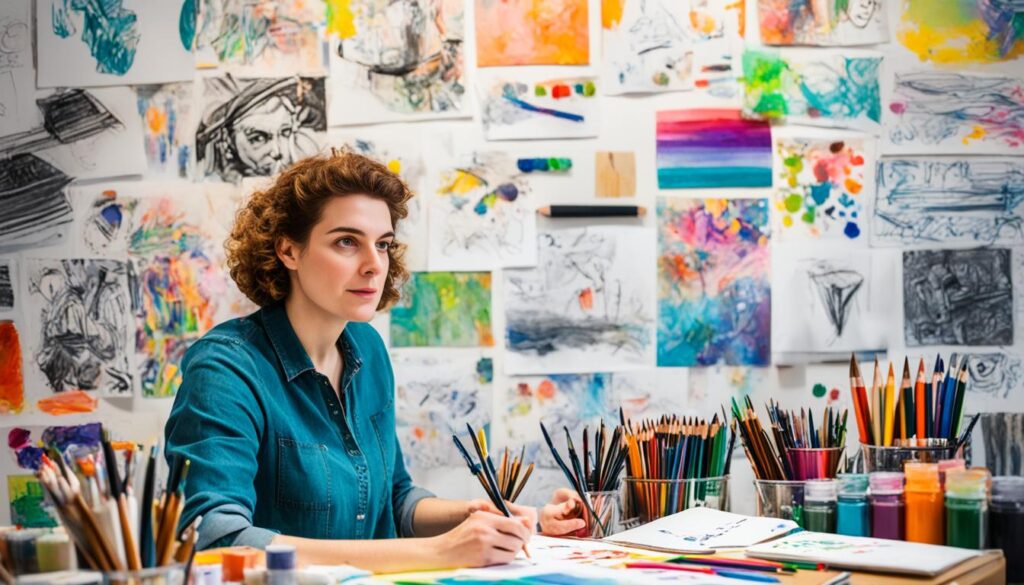
Critical Interpretation: Going Beyond Surface-Level Analysis
Engaging in a critical interpretation of art allows you to delve into deeper meanings beyond superficial observations. This value lies in understanding the myriad factors that shape an artwork, including the artist’s intentions, historical context, and cultural influences. By incorporating contextual analysis, you can create a more nuanced appreciation of the piece, enabling you to formulate your own unique viewpoint.
The Importance of Context in Interpretation
Your analysis should not only focus on formal qualities but also explore various visual elements and design principles. Considerations might include:
- Line and Shape
- Color and Texture
- Balance and Harmony
Questions that probe into the subject matter, themes, and narratives of the artwork can enrich your understanding. By examining various components together, you avoid being narrow-minded. This breadth is essential for a thorough contextual analysis.
Formulating Your Own Perspective on an Artwork
Art appreciation requires you to develop your personal perspective in art. You should articulate your views clearly, backed by evidence and explanation. Formal analyses typically emphasize the importance of fleshing out your opinions with justifiable reasons. Encourage your analysis by making sketches or drawings as you reflect on the artwork. This practice not only aids in solidifying your interpretations but also engages you actively with the piece.

Remember to reference all sourced content appropriately while demonstrating subject-specific knowledge. Through a combination of visual engagement and thorough research, your interpretation can transcend surface-level readings, fostering both personal and academic growth in your art journey.
| Visual Element | Importance in Analysis |
|---|---|
| Line | Creates structure and guides the viewer’s eye |
| Color | Evokes emotions and influences the mood |
| Texture | Adds depth and dimension to the artwork |
| Balance | Enhances harmony within the composition |
| Space | Creates relationships between elements |
Identifying Formal Elements in Art
Recognizing the formal elements of art enriches your understanding of an artwork’s composition and emotional depth. By dissecting components like structure, color, and texture, you unlock the artist’s intent and the piece’s overall impact. This knowledge elevates your art appreciation journey and sharpens your analytical skills.
Understanding Composition and Structure
Composition in art plays a vital role in how elements are arranged and observed. Artists rely on lines, shapes, forms, and space to create dynamic visual narratives. For instance, shapes can be organic or geometric, which can significantly influence the artwork’s message. Three-dimensional forms provide depth and can be perceived from multiple angles, engaging the viewer in a more immersive experience.
- Line: Serves as the fundamental building block for analyzing art.
- Space: Represents the area around and between objects, enhancing balance and movement.
- Balance: Achieved through the harmonious combination of textures, colors, and shapes.
Exploring Color Theory and Palette Choices
Color theory in art appreciation delineates how colors interact and the emotions they invoke. Understanding the three main characteristics of color—hue, value, and intensity—allows for a deeper comprehension of an artist’s palette choices. Dark colors often convey a sense of mystery, while bright colors elicit positive energy and heightened emotions.
| Color Characteristic | Description |
|---|---|
| Hue | The attribute of a color that enables one to distinguish it from others. |
| Value | Refers to the lightness or darkness of a color, characterized by variations between black and white. |
| Intensity | The brightness or dullness of a color, which can affect the overall mood of the artwork. |
Emphasizing texture in art contributes to the viewer’s experience, as it can be visually and physically perceived. Artists use techniques like line and shading to imply texture, whether it is hard, soft, rough, or smooth. This interplay of various formal elements solidifies the work’s emotional and aesthetic resonance.

Engaging with Artists: Insights into Their Creative Process
Engaging directly with artists offers a unique opportunity to delve into the creative processes that shape their work. This engagement not only enhances your appreciation of art but also allows for a deeper understanding of the motivations and inspirations behind various pieces. Attending artist interviews, talks, and studio visits provides a platform to explore artist insights that are often not transparent in the final artwork.
Learning from Artist Interviews and Talks
Artist interviews and talks play a crucial role in art appreciation by providing a narrative that captures the artist’s journey. Understanding the audience’s interests significantly enhances the effectiveness of these presentations. Artists can create a more engaging experience by narrating their challenges, triumphs, and pivotal moments that shaped their artistry.
- Encouraging open-ended questions fosters interactive dialogue.
- Using humor and vulnerability can deepen relatability and connection.
- Discussing the creative process enriches audience understanding.
The Value of Studio Visits
Studio visits for art appreciation offer exceptional insight into an artist’s environment. These visits allow you to witness firsthand the materials, techniques, and inspirations that inform each piece of work. Engaging with artists in their creative space often sparks valuable discussions, enhancing the learning experience.
| Studio Visit Benefits | Artist Insights |
|---|---|
| Direct interaction with artists | Understanding the creative process |
| Exposure to materials and techniques | Appreciating the context of artworks |
| Opportunity for asking questions | Gaining personal interpretations of art |
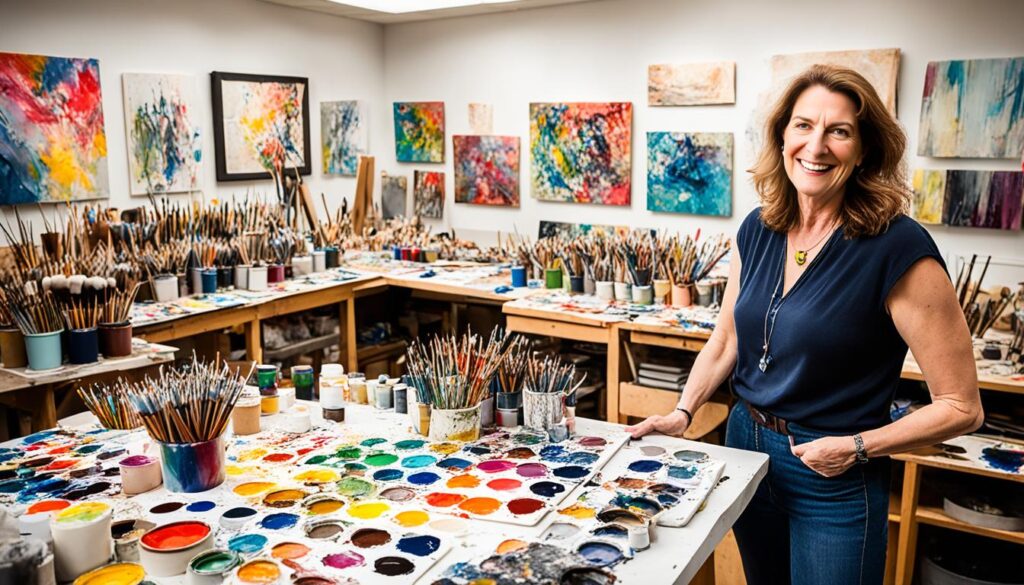
By prioritizing developmental dialogues and actively listening during these encounters, you cultivate a richer appreciation for the complexities of artistic expression. Even short conversations can yield profound insights and help nurture a lasting connection with art and its creators.
Developing Aesthetic Judgment in Art Appreciation
Aesthetic judgment plays a crucial role in art appreciation, allowing you to navigate and express your personal taste in a thoughtful manner. Understanding how to evaluate and articulate opinions about various artworks enhances your ability to connect with art on a deeper level. Developing this skill involves assessing not only the visual elements but also the emotional and intellectual responses elicited by the piece.
What is Aesthetic Judgment?
Aesthetic judgment in art refers to the process of evaluating artworks based on personal feelings, cultural context, and intellectual understanding. This journey involves two key cognitive abilities: imagination and understanding. According to Kant’s theory, judgments can be divided into determinate and indeterminate categories. Determinate judgments focus on how much you personally agree with or appreciate an artwork’s utility, while indeterminate judgments lead you to recognize beauty through harmonious engagement with the piece.
Practicing Your Own Judgments and Opinions on Art
Practicing judgments becomes essential as you cultivate your own taste in art. To enhance this skill, consider the following approaches:
- Reflect on your experiences: Analyze your emotional and intellectual reactions to different artworks.
- Engage in discussions: Share your thoughts with friends or peers to gain diverse perspectives.
- Study various art forms: Explore painting, sculpture, photography, and more to broaden your understanding.
- Take art courses: Engage in structured learning to develop a visual vocabulary and creative expression.
The pleasure derived from aesthetic reflective judgments is rooted in the harmonious interplay of your cognitive faculties. You will find it’s not only the visual but also the emotional engagement that defines your artistic understanding. Disinterestedness is essential in this process, where genuine appreciation arises from a detached perspective, allowing for a richer encounter with the art.

| Art Form | Key Focus | Example Courses |
|---|---|---|
| Painting | Color theory, techniques | Painting Basics, Advanced Techniques |
| Sculpture | Form, material choices | Introduction to Sculpture, Sculpture in the Round |
| Photography | Visual composition, light play | Fundamentals of Photography, Digital Imaging |
| Performance Art | Body movement, audience interaction | Performance Art Practices, Contemporary Performance |
| Printmaking | Techniques and methods | Introduction to Printmaking, Advanced Print Techniques |
These practices help reinforce your ability to articulate your thoughts and contribute to the broader conversation about art appreciation, aiding you in developing a refined aesthetic judgment and a lasting appreciation for the diverse world of art.
Conclusion
In summary of art appreciation, the journey through understanding various art elements, techniques, and historical contexts offers endless opportunities for personal growth and intellectual fulfillment. Each section of this guide has been designed to enhance your ability to analyze and interpret art, emphasizing that mastering art appreciation requires both knowledge and experience. Your engagement with artwork— whether through a gallery or personal reflection— will invariably enhance your artistic sensibilities. Furthermore, understanding different art styles allows for a deeper appreciation of the diversity within the art world, broadening your understanding and allowing you to see the world through different artistic lenses. By immersing yourself in the world of art, you can gain a better understanding of the cultural, social, and political influences that have shaped different artistic movements throughout history. This, in turn, can lead to a more enriched and informed perspective on both art and the world around you.
Final thoughts on art analysis center on the importance of immersing yourself in the cultural and historical narratives that shape each piece. Whether you are practicing your aesthetic judgments or exploring an artist’s creative process, remember that your unique perceptions are essential to the appreciation of art. By applying the principles discussed, you can elevate your encounters with art into an enriching and transformative experience.
As you continue delving into the world of art, keep an open mind and remain curious. Understanding the complexity of color theory and artistic techniques will further refine your ability to enjoy and critique art. Embrace every opportunity to engage creatively and intellectually; mastering art appreciation is an ongoing journey filled with joy and discovery.
